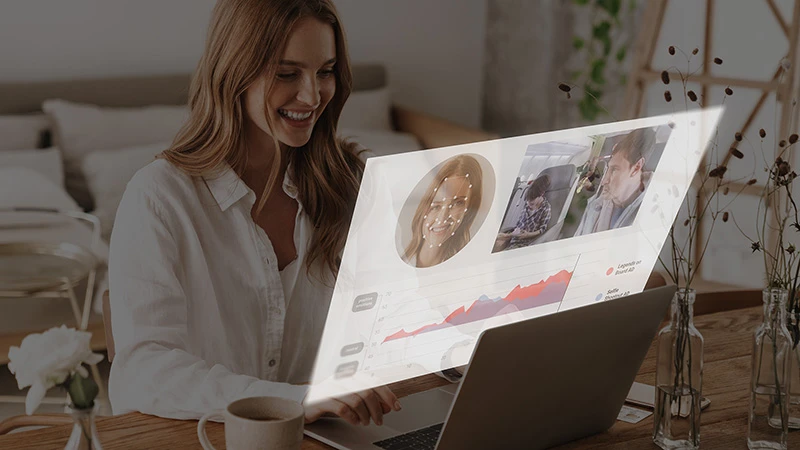Although billions are invested in online video advertising, an accurate methodology for predicting whether an online video ad will achieve its viral objective on social media has not yet been developed. With a grant received from the European Commission, EyeSee conducted an online video study among more than 1500 respondents. Each respondent watched five online videos, followed by a survey.
We found that facial coding is two times more efficient in predicting its potential to go viral, as opposed to the use of a more traditional method, like a survey.
The study: 1539 respondents were exposed to 52 online commercials of the biggest brands
The goal of the study was to determine if a facial coding interview and/or a survey can predict the viral effect of online commercials and what their impact is on sales.
- 52 online commercials from seven industries were tested. For each industry, we selected the two to three leading companies. For each company we chose one best-performing and one least-performing online commercial, based on number of views, shares, likes and comments on YouTube and social networks.
- In total, 1539 respondents were recruited. Respondents were first exposed to two to five ads while their emotions were tracked through facial coding. Afterwards, respondents were asked to fill out a survey.
- A two-staged process was used for emotion recognition. First an algo automatically detected the respondents’ facial expressions, next, a human coder double-checked the coding. The expressions were coded into 7 emotions: happy, surprised, disgusted, puzzled, afraid, sad and neutral.
Research results
1. Facial coding: explains the viral effect two times better than traditional survey

Using facial coding, the facial expressions evoked by the commercial were translated into seven expressions. The study found that surveys explain 23% of viral effect of online commercials, while facial coding explains 45%. Thus, facial coding can predict the viral performance much better than surveys and therefore can keep marketers from investing into future failures.
In general, more than half (53%) of viewers have an emotional response to the commercials from our top viral category (>5000 viral activities), compared to around a third for the low viral category videos (<500 viral activities).

2. Facial coding: Happiness is the best predictor of viral activities
Of the seven coded emotions, only happiness was found to have a significant correlation with viral activities, meaning that only when people feel happy while seeing the advertisement, will they be more likely to share, like, and comment on social networks
42% of respondents expressed happiness while watching videos with more than 5000 viral activities. This result makes it the most often expressed emotion. A further 12-14% of respondents were puzzled, while 9% were surprised while watching the commercials.

The graph below shows a clear correlation between expression of happiness and viral activities (number of shares, likes and comments on and social networks).
As for the brand awareness: the situation when respondents are happy, but not confused, results in the commercial being remembered.

3. Survey: Non-relaxing commercials have the highest chance to get viral
The survey is based on the combination of widely accepted pre-testing TV commercial surveys and consists of seven dimensions:
- Enjoyment – likeability and emotional attributes (pleasant/unpleasant)
- Involvement – emotional attributes (interesting/boring, relaxing/irritating)
- Branding – brand connection
- Newsworthiness of content – was it new, relevant, credible, different?
- Understanding the message – was it easy/hard to understand?
- Brand perception – is the brand perceived differently, better or more appealing after seeing the commercial? What is the level of brand consideration?
Also, important variables were if they would share the video online, or buy the product.
Among all tested survey variables, three of them are significant predictors of the viral effect:
1. If the content is perceived as distinctive,
2. If the content is NOT perceived as relaxing,
3. If respondents state they want to share it.
Distinctiveness of the content is the most important survey attribute and in the highest amount predicts future viral effect as can be seen in the following graph.

Remaining results to be revealed: facial coding of online commercials as sales predictor
· Whether facial coding of commercials can predict the impact on sales,
· If socio/demographic differences affect a commercial’s online success – who is more expressive/what is the key factor that drives attention: woman vs. man, buyers vs. non-buyers, younger vs. older…
Stay tuned…
